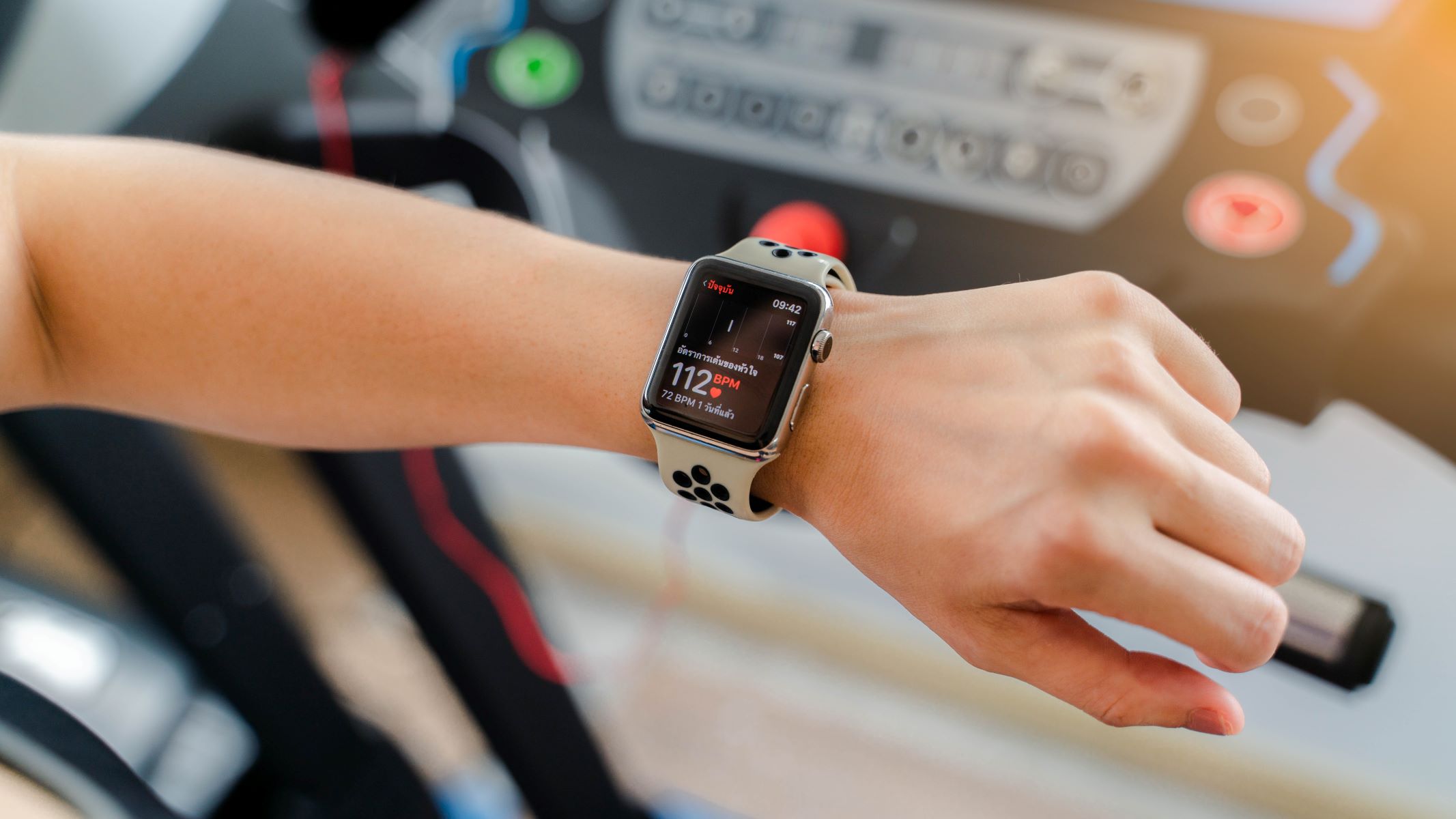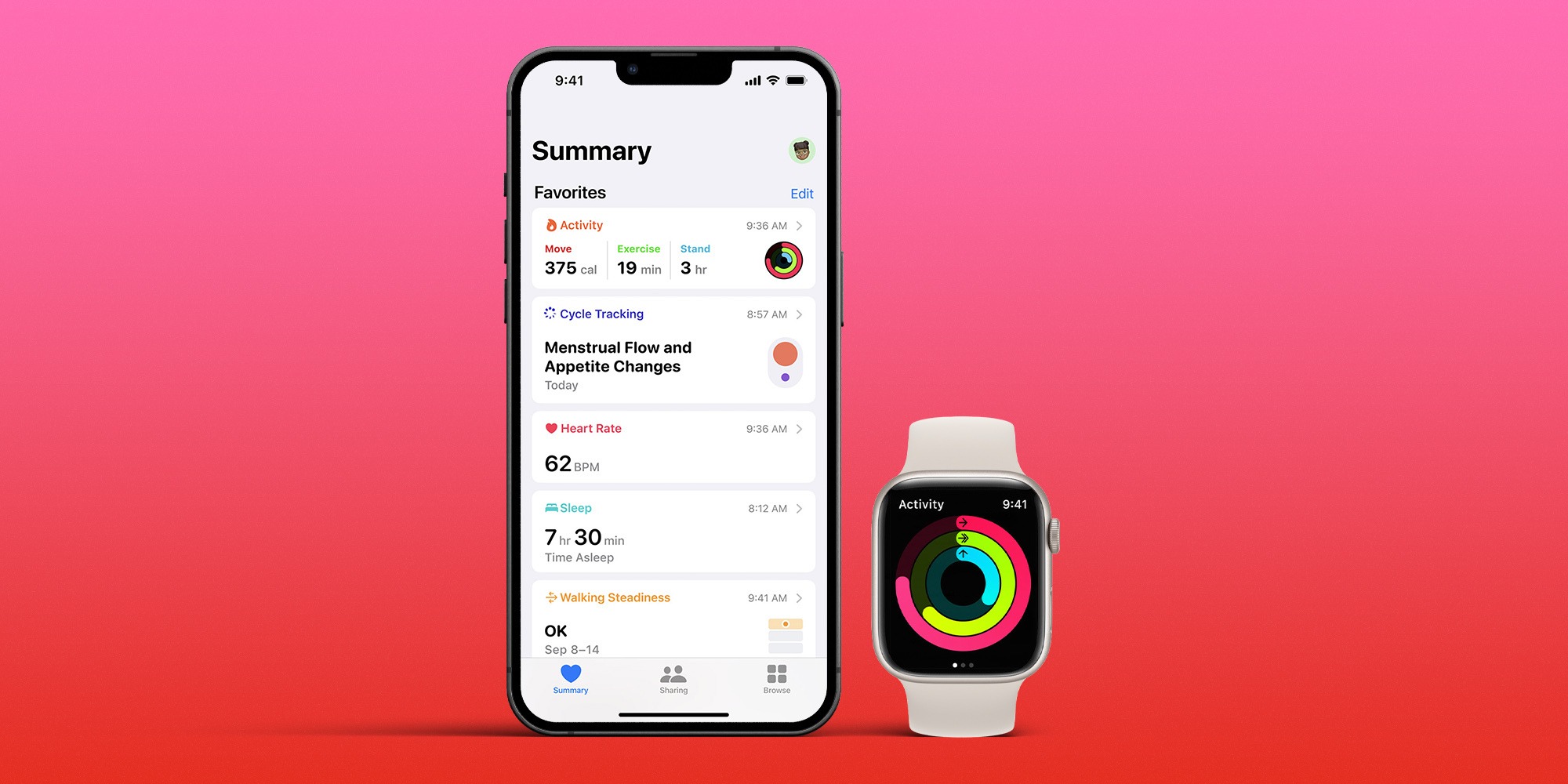

Brands
How To Do Interval Training On Apple Watch
Modified: August 21, 2023
Learn how to do interval training with your Apple Watch. Discover the best brands for interval training and maximize your workouts.
Introduction
Welcome to the world of interval training on your Apple Watch! If you’re looking to maximize your fitness gains and challenge yourself during workouts, interval training is a great way to go. With the help of your Apple Watch, you can now easily incorporate this high-intensity training technique into your fitness regimen.
Interval training involves alternating between periods of high-intensity exercise and short recovery periods. This type of training has gained popularity due to its ability to improve cardiovascular fitness, burn calories efficiently, and boost overall athletic performance.
Apple Watch offers a range of advanced features that make it the perfect companion for interval training. From customized workout programs to real-time tracking and data analysis, the Apple Watch provides everything you need to make the most out of your interval training sessions.
In this article, we will dive into the world of interval training on your Apple Watch. We’ll explore the benefits of interval training, guide you through setting up interval training workouts, provide tips for effective training sessions, and show you how to monitor and analyze your interval training data. Whether you’re a seasoned athlete or just starting your fitness journey, interval training on Apple Watch can help you take your workouts to the next level.
Get ready to push your limits, challenge yourself, and achieve your fitness goals with the power of interval training on your Apple Watch.
What is Interval Training?
Interval training is a type of training that involves alternating between high-intensity exercise and short recovery periods. Unlike traditional steady-state workouts, where you maintain a consistent intensity throughout, interval training pushes your body to work harder and recover faster, leading to greater fitness gains.
The concept of interval training is based on the principle of “exertion and recovery.” During the high-intensity exercise intervals, you push your body to its maximum capacity, reaching near-maximal heart rate and challenging your cardiovascular system. These intense bursts of effort help to improve your aerobic and anaerobic fitness levels.
Following the intense exercise interval, you have a short recovery period where you allow your body to rest and recover before the next high-intensity interval. This recovery period is crucial for reducing fatigue, allowing your heart rate to lower, and replenishing energy stores.
Interval training can be done with various forms of exercise, such as running, cycling, swimming, or using cardio machines. You can customize the duration and intensity of both the exercise and recovery intervals based on your fitness level and goals.
One of the main benefits of interval training is its time efficiency. Compared to longer, steady-state workouts, interval training allows you to achieve the same or even better results in a shorter amount of time. The combination of high-intensity efforts and adequate recovery periods stimulates your body to adapt and elevate its performance.
Additionally, interval training is a versatile training method that can be modified to suit different fitness levels. Beginners can start with shorter intervals and slower-paced workouts, gradually increasing the intensity and duration over time. Advanced athletes can push their limits with longer and more intense intervals to continually challenge their bodies.
Now that you have a better understanding of interval training, let’s explore the numerous benefits it offers and how you can set it up on your Apple Watch to supercharge your workouts.
Benefits of Interval Training
Interval training offers a wide range of benefits for both your physical fitness and overall health. Whether you’re aiming to improve your cardiovascular endurance, burn calories, or enhance athletic performance, interval training can be a game-changing addition to your workout routine. Here are some of the key benefits:
1. Efficient Calorie Burn: Interval training stimulates your metabolism and keeps it elevated even after your workout. This means you continue burning calories long after you’ve finished exercising.
2. Improved Cardiovascular Fitness: Interval training challenges your heart and lungs to work harder, leading to improved cardiovascular endurance. Your heart becomes more efficient at pumping blood and oxygen, allowing you to sustain higher exercise intensities for longer periods.
3. Time Efficiency: One of the major advantages of interval training is its time-saving nature. With shorter and more intense workouts, you can achieve the same, or even better, results compared to longer, steady-state sessions.
4. Muscular Endurance Development: Interval training engages your muscles in high-intensity efforts, improving their endurance. This can be especially beneficial for activities that require prolonged strength and power, such as running, cycling, or sports like soccer or basketball.
5. Increased Anaerobic Capacity: Interval training helps improve your body’s ability to process and utilize oxygen during intense exercise. This enhances your anaerobic capacity, allowing you to perform at higher intensities without accumulating high levels of lactic acid.
6. Variety and Mental Stimulation: Interval training offers a dynamic and constantly changing workout structure, keeping you mentally engaged and motivated. Breaking up your workouts into intervals adds variety and prevents boredom.
7. Enhanced Fat Burning: Interval training promotes fat burning by utilizing both carbohydrates and fats as fuel sources during high-intensity efforts. This can be particularly beneficial for individuals looking to lose weight or reduce body fat.
8. Adaptable for Different Fitness Levels: Interval training can be tailored to suit various fitness levels. Beginners can start with shorter intervals and lower intensities, gradually increasing the difficulty as they progress. Advanced athletes can challenge their limits with longer and more intense intervals.
Incorporating interval training into your fitness routine can help you break through plateaus, achieve new levels of fitness, and add variety to your workouts. With the Apple Watch’s capabilities, you’ll be able to harness the full potential of interval training and track your progress with precision. Let’s now move on to setting up interval training workouts on your Apple Watch.
Setting Up Interval Training on Apple Watch
Your Apple Watch provides a range of features and tools to help you set up and customize interval training workouts. Follow these steps to get started:
1. Choose a Workout App: Apple Watch offers several built-in workout apps like Outdoor Run, Indoor Cycle, or Pool Swim that can be customized for interval training. Alternatively, you can explore third-party apps specifically designed for interval training.
2. Access the Workout App: Open the Workout app on your Apple Watch or on your iPhone and select the workout type that best aligns with your intended training activity. For instance, if you’re planning to do interval training while running, choose the Outdoor Run option.
3. Customize Your Workout: Before starting the workout, tap on the three dots (…) to access the options menu and choose “Interval Training.” From there, you can set the duration and intensity of your intervals, as well as the duration of the recovery periods.
4. Set Your Interval Structure: Define the number of intervals you want to complete during the workout. You can also set the duration for each interval and the recovery period. Experiment with different combinations to find the right level of challenge for your fitness level.
5. Enable Audio and Haptic Feedback: Apple Watch provides audio and haptic cues during interval transitions to guide you through the workout. Make sure to enable these features in the settings to receive prompts for upcoming intervals and recovery periods.
6. Sync with Music: If you enjoy listening to music during your workouts, you can sync your interval training session with your favorite playlists or workout-specific music apps. This ensures that you stay motivated and energized throughout your training.
7. Start and Track Your Workout: Once you’ve customized your interval training session, hit the “Start” button, and your Apple Watch will begin tracking your workout. The device will provide real-time data on metrics such as heart rate, pace, distance, and calories burned.
With these steps, you can easily set up interval training workouts on your Apple Watch. Take some time to experiment with different configurations to find what works best for you. Now, let’s move on to selecting the right interval training workout for your fitness goals.
Selecting the Right Interval Training Workout
When it comes to interval training, there are various workout options available to suit different fitness goals and preferences. Consider the following factors when selecting the right interval training workout for you:
1. Fitness Level: Choose a workout that aligns with your current fitness level. If you’re a beginner, start with shorter interval durations and lower intensities. As you progress, gradually increase the intensity and duration of your intervals.
2. Goals: Determine your fitness goals and select a workout that aligns with them. If your aim is to improve your cardiovascular fitness, consider workouts that focus on sustained high-intensity efforts. If fat loss is your goal, opt for workouts that incorporate shorter, more intense intervals.
3. Exercise Preferences: Select a workout that incorporates exercises you enjoy and are comfortable performing. Whether it’s running, cycling, swimming, or using cardio machines like the elliptical or rowing machine, choose an activity that keeps you motivated and engaged.
4. Variety: To prevent boredom and keep your workouts interesting, rotate between different interval training workouts. You can alternate between outdoor runs, indoor cycling sessions, or even circuit-based workouts that combine bodyweight exercises with cardio intervals.
5. Specific Training Needs: Consider any specific training needs or sports-specific goals you may have. For instance, if you’re a runner training for a race, include interval workouts that simulate race conditions with varying intensities and terrain.
6. Recovery: Pay attention to the recovery periods in your interval training workouts. Adequate recovery is crucial for allowing your body to rest, replenish energy stores, and prepare for the next interval. Ensure that the recovery periods are long enough to help you maintain the intensity throughout the workout.
7. Tracking and Progress: Choose a workout that allows you to track your progress and monitor your performance over time. Look for options that provide detailed metrics such as heart rate, pace, distance, and calories burned. This will help you assess your improvements and adjust your training accordingly.
When selecting the right interval training workout, it’s important to listen to your body and gradually progress as you become more comfortable. Remember to warm up properly before each session and cool down afterward to help prevent injuries and aid recovery.
Now that you understand how to select the right interval training workout, let’s move on to the next section, where we’ll explore how to perform interval training on your Apple Watch.
Performing Interval Training on Apple Watch
Once you have set up your interval training workout on your Apple Watch, it’s time to get moving and perform your intervals. Here’s a step-by-step guide on how to make the most out of your training session:
1. Start the Workout: Put on your Apple Watch and select the interval training workout you’ve designed. Tap the “Start” button, and the workout timer will begin.
2. Warm-Up: Begin with a light warm-up to prepare your body for the upcoming high-intensity intervals. This can include dynamic stretches or a low-intensity activity like jogging or cycling.
3. Interval Intensity: As you enter the high-intensity intervals, push yourself to reach a challenging level of exertion. Aim for an intensity that makes it difficult to hold a conversation. This will vary based on your fitness level and the specific workout.
4. Recovery Breaths: During the recovery periods, focus on deep breathing to help lower your heart rate and facilitate the recovery process. Use this time to catch your breath and prepare for the next interval.
5. Form and Technique: Pay attention to your form and technique throughout the intervals. Maintain proper posture, engage your core, and ensure correct movement patterns for the specific exercise you’re performing.
6. Listen to Cues: Pay attention to the audio and haptic cues provided by your Apple Watch. These prompts will inform you about upcoming intervals, recovery periods, and any necessary changes in intensity.
7. Stay Hydrated: Hydration is key during interval training sessions. Remember to take sips of water or electrolyte-rich fluids during the recovery periods to replenish lost fluids and stay hydrated.
8. Push Yourself, but Listen to Your Body: Challenge yourself during the high-intensity intervals, but also listen to your body’s cues. If you feel excessive fatigue, dizziness, or pain, it’s important to modify or stop the workout and seek professional guidance if necessary.
9. Cool Down: After completing the intervals, gradually lower the intensity and include a proper cool-down. This can involve light stretching or a low-intensity activity to gradually bring your heart rate back to normal.
By following these steps, you can effectively perform interval training on your Apple Watch. As you become more comfortable with the workouts, don’t hesitate to increase the intensity, duration, or number of intervals to continue challenging yourself and progressing towards your fitness goals.
Next, let’s explore how you can monitor and analyze your interval training session data using the features offered by your Apple Watch.
Monitoring Your Interval Training Session
One of the advantages of interval training with your Apple Watch is the ability to monitor your workout in real-time and stay informed about your performance. Here’s how you can effectively monitor your interval training session:
1. Display Metrics: During your workout, your Apple Watch will display various metrics such as heart rate, pace, distance, and calories burned. These real-time metrics give you immediate feedback on your performance and help you stay on track with your goals.
2. Heart Rate Monitoring: Pay attention to your heart rate data as it’s a valuable indicator of your effort level. Monitor your heart rate during the high-intensity intervals to ensure you’re pushing yourself to the desired intensity. Use the recovery periods to observe how quickly your heart rate drops, indicating your cardiovascular fitness level.
3. Audio and Haptic Feedback: The Apple Watch provides audio and haptic cues during interval transitions to keep you informed about upcoming intervals and recovery periods. Listen to these cues and use them to guide your efforts throughout the workout.
4. Form and Technique: While monitoring your metrics, also pay attention to your form and technique. Make sure you’re performing the exercises correctly and efficiently, optimizing your movements during each interval.
5. Fluid Intake: Keep track of your fluid intake during the workout to maintain optimal hydration levels. If your Apple Watch supports it, you can also log your water consumption directly on the device for a more comprehensive record of your training session.
6. Sync with iPhone or Fitness Apps: After completing your interval training session, you can sync your Apple Watch data with your iPhone or fitness apps. This allows you to further analyze your performance, view trends over time, and compare your interval training sessions.
7. Review and Analyze: Take time to review your interval training session data and analyze your performance. Look for areas where you can improve, whether it’s increasing the intensity of your intervals, shortening the recovery periods, or targeting specific metrics like heart rate or pace.
8. Track Progress: Regularly track your progress to see how your interval training sessions are helping you meet your fitness goals. Use the data provided by your Apple Watch to measure improvements in endurance, speed, and overall performance.
By monitoring your interval training session using the features and data provided by your Apple Watch, you can gain valuable insights into your workout and make adjustments as needed. This real-time feedback and analysis will help you maximize the benefits of interval training and continuously progress on your fitness journey.
Next, let’s explore how you can analyze your interval training data and use it to fine-tune your workouts for even better results.
Analyzing Your Interval Training Data
After completing your interval training session with your Apple Watch, you can dive into the data and analyze your performance to gain valuable insights. Here’s how you can effectively analyze your interval training data:
1. Review Metrics: Take a closer look at the metrics recorded by your Apple Watch, such as heart rate, pace, distance, and calories burned. Compare these metrics with previous workouts to track your progress and identify any improvements or areas that may need attention.
2. Identify Patterns: Look for patterns in your interval training data. Are there any trends in your heart rate, pace, or distance covered throughout the workout? By identifying patterns, you can understand how your body responds to different intervals and utilize this information to optimize your training.
3. Assess Intensity: Analyze your heart rate data to evaluate the intensity of your high-intensity intervals. Are you reaching and maintaining your desired heart rate zone during these intervals? Adjust the duration or intensity of your intervals if needed to ensure you’re challenging yourself appropriately.
4. Note Recovery: Examine how your heart rate drops during the recovery periods. A faster drop in heart rate indicates better cardiovascular fitness and efficient recovery. If your heart rate remains elevated for extended periods during recovery, consider lengthening the recovery periods or reducing the intensity of your intervals.
5. Consider Pace and Distance: If you’re tracking your running or cycling workouts, analyze your pace and distance data. Is your pace improving over time? Are you covering more distance during your high-intensity intervals? Use this information to set goals and track your progress.
6. Compare Workouts: Compare multiple interval training sessions to identify trends, improvements, or areas that may need adjustment. Look for factors that may have influenced your performance, such as sleep quality, nutrition, or external conditions. Use this information to fine-tune your future workouts.
7. Take Notes: Keep a training journal or make notes on your Apple Watch to record any observations, insights, or changes you want to implement for future workouts. This will allow you to track your progress and make informed decisions when planning your interval training sessions.
8. Consult a Professional: If you’re struggling to analyze your interval training data or optimize your workouts, consider consulting a fitness professional or coach. They can provide guidance and help you make informed decisions based on the data recorded by your Apple Watch.
Analyzing your interval training data allows you to track your progress, make adjustments to your workouts, and continue challenging yourself. By leveraging the insights provided by your Apple Watch, you can make the most out of your interval training sessions and work towards your fitness goals effectively.
Now that we have explored the analysis of interval training data, let’s move on to the next section where we’ll provide some tips for effective interval training on your Apple Watch.
Tips for Effective Interval Training on Apple Watch
To optimize your interval training sessions on your Apple Watch and achieve the best results, consider these tips:
1. Set Clear Goals: Define your goals and objectives for interval training. Whether it’s improving endurance, increasing speed, or burning calories, having clear goals will help you structure your workouts and stay motivated.
2. Gradually Increase Intensity: Start with shorter intervals and lower intensities, gradually increasing the duration and intensity as your fitness level improves. This progressive approach ensures your body adapts gradually and minimizes the risk of injury.
3. Mix Up Workouts: Avoid doing the same interval training workout repeatedly. Vary your workouts by changing the interval durations, intensities, and exercises to challenge different muscle groups and prevent monotony.
4. Use Different Interval Structures: Experiment with different interval structures, such as Tabata (20 seconds of work, 10 seconds of rest), pyramid (increasing then decreasing intervals), or ladder (progressively increasing intervals). Mixing up the interval structures keeps your workouts exciting and boosts overall fitness.
5. Listen to Your Body: Pay attention to how your body feels during the intervals. Push yourself to a challenging level, but not to the point of exhaustion or pain. Rest when needed and modify workouts if you’re feeling fatigued or experiencing any discomfort.
6. Rest and Recover: Allow ample rest and recovery periods between intervals to prevent overexertion and optimize performance. Use the recovery periods to focus on deep breathing and preparing mentally for the next high-intensity interval.
7. Track Your Progress: Regularly review and analyze your interval training data on your Apple Watch to track your progress. Look for improvements in metrics like heart rate, pace, and distance to stay motivated and celebrate your achievements.
8. Stay Hydrated: Hydration is crucial during interval training. Drink sufficient fluids before, during, and after your workout to maintain optimal performance and prevent dehydration.
9. Cross-Train: Incorporate cross-training activities into your routine to work different muscle groups and reduce the risk of overuse injuries. This can include strength training, yoga, or other forms of cardio exercises.
10. Recover Smartly: Pay attention to your recovery strategy outside of your interval training sessions. Get enough sleep, eat a nutritious diet, and incorporate active recovery, such as light walks or foam rolling, to aid in muscle repair and readiness for future workouts.
By following these tips, you can make your interval training sessions on your Apple Watch more effective and enjoyable. Remember, consistency is key, so make interval training a regular part of your fitness routine to reap the full benefits.
Now, you’re ready to take your interval training to the next level with your Apple Watch. Remember to always listen to your body, stay motivated, and enjoy the journey towards your fitness goals.
Conclusion
Interval training on your Apple Watch offers a powerful and convenient way to enhance your fitness and achieve your goals. By incorporating high-intensity intervals and proper recovery periods, you can improve cardiovascular fitness, burn calories efficiently, and boost overall athletic performance.
With the features and capabilities of your Apple Watch, you have the tools to set up, monitor, and analyze your interval training sessions effectively. The ability to customize workouts, track real-time metrics, and review data allows you to fine-tune your training, monitor your progress, and make informed decisions for future sessions.
Remember to start gradually and listen to your body. Push yourself within your limits and modify workouts as needed. It’s crucial to prioritize proper warm-ups, cool-downs, and recovery strategies to prevent injuries and optimize performance.
By setting clear goals, mixing up workouts, and gradually increasing the intensity, you will continuously challenge your body and experience the benefits of interval training. Use the data recorded by your Apple Watch to track your progress, identify patterns, and make adjustments for optimal results.
Interval training on your Apple Watch is not just about achieving physical gains; it’s also about the mental stimulation and variety it brings to your fitness routine. The dynamic structure and customization options keep you engaged, motivated, and excited about each interval training session.
So, equip yourself with your Apple Watch and take advantage of its features to embark on your interval training journey. Push yourself, embrace the challenge, and enjoy the progress you make along the way.
Get ready to maximize your fitness potential with the power of interval training on your Apple Watch. Start today and experience the incredible benefits it has to offer.



